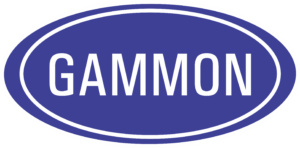People who work with jet fuel handling equipment need special knowledge that the experienced old-timers often forget to pass on to new personnel. In our GamGrams, we tend to talk about the bigger issues and problems but there are many little “tricks of the trade” that we thought you might like to see in one issue.
Buna N – Viton – Neoprene
How many times have you wanted know what compound was used to make an O-ring? They are all black and they look the same. The only test we know of is destructive – you must burn it. Therefore, if you know you need one Buna N O-ring and you have 2 of them, cut one and hold a match to one end – be sure it is clean and dry first:
| Buna N | burns easily and keeps on burning after you take the match away. |
| Neoprene | burns easily but the flame goes out when you take the match away. It also tends to sputter as it burns. |
| Viton A | burns but is harder to light than Neoprene. The flame goes out when the match is taken away. It does not sputter. |
The Correct Rubber Compound
All too frequently, we are requested to supply Neoprene gaskets for jet fuel. We thought that the entire industry learned this lesson many years ago. Buna N is the proper choice for jet fuel because it swells much less than Neoprene. However, if very low swelling is necessary, such as in dynamic or moving seals, most manufacturers can offer special, low swelling grades of Buna N. If near zero swell is needed, Viton A is the choice.
| Buna N | Jet fuel |
| Neoprene | Lube oils |
| Viton A | Extremely low swelling characteristic; exceptionally good for gasolines with high aromatic content, such as “no lead” |
Stainless Steel / Carbon Steel
Possibly the most useful gadget in a tool box is a simple magnet. Everyone knows that carbon steels are magnetic – a magnet attracts it. People also know that a magnet is not attracted to aluminum or brass but few of them know that a magnet is not attracted to stainless steel.
Unfortunately, there is an exception to this rule. When we say “stainless steel”, we generally mean a grade of material that will not rust. These are known as 300 series stainless steels — they contain both nickel and chromium — they are non-magnetic. A grade known as 400 series stainless steel is also sold that has no nickel and it is magnetic, but it is not as corrosion resistant as 300 series. It will rust, but it will not pit deeply the way carbon steel does in mildly corrosive conditions.
Avoid Copper, Zinc, and Cadmium
One of the most common errors we see in jet fuel facilities is the use of galvanized pipe fittings. The oil industry has been fighting this battle for 25 years but dealers and fuel handlers continue to make the same mistake. We saw 2 cases just last week.
Copper, zinc and cadmium are bad for jet fuel because of their effect on the thermal stability of the fuel – deposit build-up in the hot section of turbine engines. A further problem of zinc and cadmium plating is that it often separates from the base metal, creating dirtier fuel.
Some engineers write specifications that exclude all copper. Clearly, this is an over-reaction to the rule. Brass hose fittings, copper tubing and brass fittings for gauge lines, brass bushings in fueling nozzles, bronze pump bushings are reasonable locations because the contact area is very small. Bronze bodies for control valves, copper piping and bronze pump housings are obviously large surface area items and should not be used.
PTFE Tape
Most people know that a compound must be used to seal tapered pipe threads. One of the first problems in jet fuel systems was with compounds that got into the fuel and plugged screens and nozzle jets. PTFE tape rapidly became the answer to the problem but it created 2 new problems.
- Tape strings – if all of the threads on a fitting are wrapped with tape, the portion of the tape on the first thread will be sliced off as the fitting is screwed in — now you have a string that can cause many problems
- Answer: never put tape on the first thread.
- Broken fittings – the low friction of PTFE allows the mechanic to take extra turns as a substitute for cutting and re-threading a pipe that is too long. In other words, the tape makes it very easy to turn a fitting. If care is not exercised, the fitting will split. If the fitting is a valve worth $400.00, this is an expensive proposition.
- Answer: Experience is the only answer. However, we have fewer problems when we use a combination of PTFE tape and a lubricant, such as petroleum jelly (Vaseline). The lubricant further reduces friction so that the mechanic has a more consistent “feel” for how tight he is making the joint.
The next GamGram will discuss fuel system designs and trade-offs, but we expect to publish a future issue that will cover more “Tricks of the Trade.” If you would like to suggest any of your own tricks, we will be happy to acknowledge your contribution.

